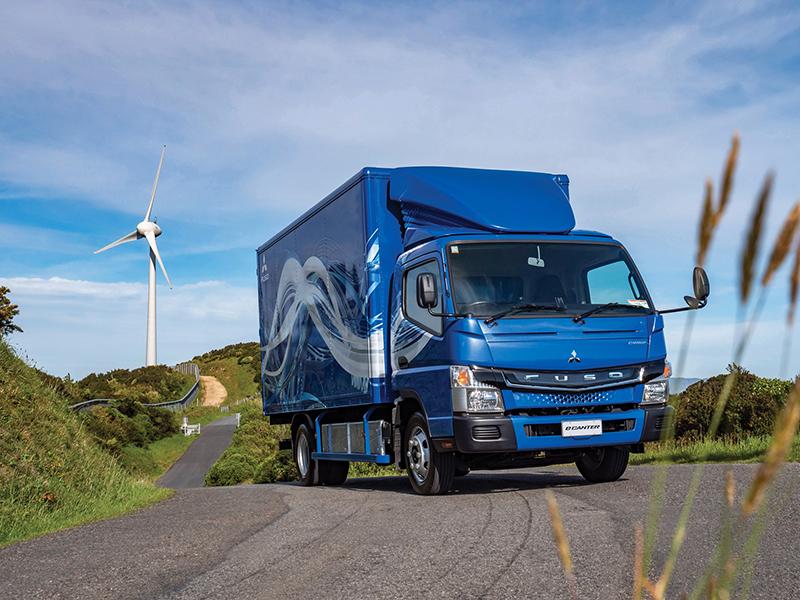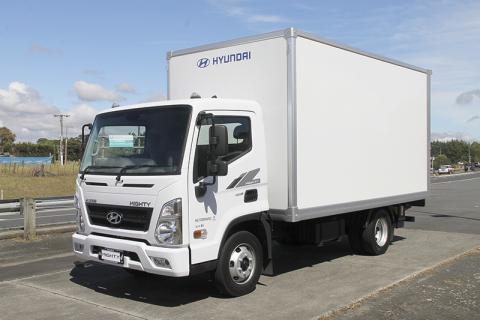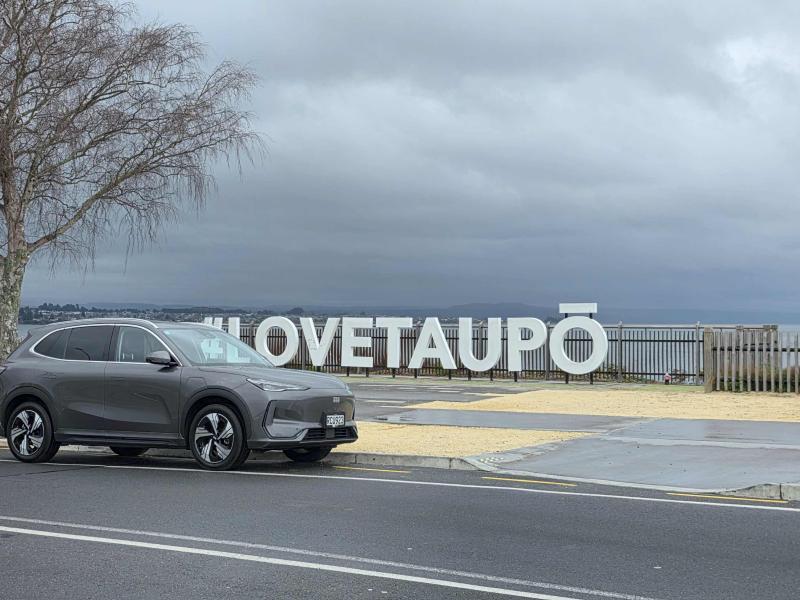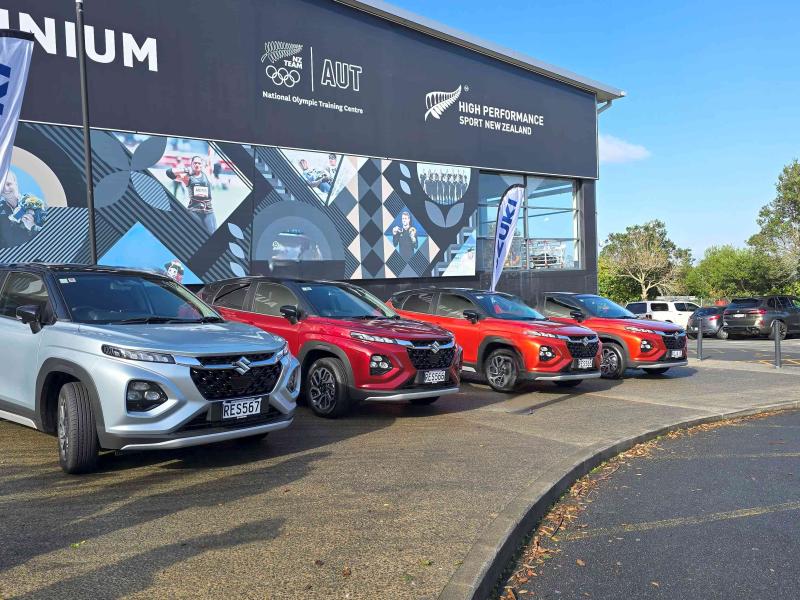We were anticipating a massive upsurge in van registrations following on from the temporary disaffection with the ute market recently, but you could have knocked us over with a CB antenna when we learned from just about every light truck manufacturer how popular their product offerings had suddenly become.
“Can’t get a ute? Get a truck,” seems to be the order of the day and that’s not just wishful thinking on the part of the truck distributors; the light truck is really coming into its own in terms of a practical ‘vehicle needed now’ solution.
Are light trucks cooler than a double cab ute? Most would say not, but are they better for your business? Most emphatically, yes.
A class 1 truck, which can be driven by anyone in your organisation holding a car licence, can carry more, is as well set up in terms of safety and comfort features as the average everyday ute, is often cheaper to buy, and can be leased, won’t generally be subjected to high-speed driving – less infringement notices – and provide greater visibility for the driver in a sea of utes and high riding SUVs. Plus, your drivers are driving trucks, and everybody knows how cool trucks are to drive!
Accordingly, truck makers are producing trucks which are as easy to drive as a car, some would say easier, and the equipment levels are right up there.
I can remember a time when New Zealand’s number one selling van did not have aircon as standard (it wasn’t that long ago either), but today’s light trucks have it, and much more besides.
And what’s more, the light trucks of today are actually leading the way in emission-friendly transport. They are cleaner, quieter and generally becoming a better bet for any organisation wanting to make an environmental or efficiency statement.
At Company Vehicle, we have just started scratching the surface of the light truck industry, but we’re excited by the new developments in this market sector and the overall desirability of the products available.
Check out the surprising segment that is light trucks, you may not need to wait for that replacement ute as much as you thought.
Foton Aumark C
Foton has had an interesting time in the New Zealand market, but it has always generated a solid following with those who own or operate the vehicles. Those who own them won’t move out of them, so while Foton may not be the brand on everyone’s lips, the product is more than up to par, and the truck-maker out of China is making some significant in-roads into a Japanese-dominated market. In fact, latest information from the Motor Industry Association shows the Foton Aumark range of light truck is regarded as an up-and-coming brand which is moving up fast behind the likes of the Fuso Canter and the Isuzu N-Series. The Aumark range is extensive featuring as it does the Aumark C, Aumark S and the Aumark EST-M and each of these models have a number of variants. The Aumark C for example – the truck most likely to find its way into a fleet where a utility vehicle may not be the best choice – has one model, but offers five body configurations, including a cab chassis, tray equipped model, tipper unit, box body and box body with tail lift. Each body configuration is covered by a one year / 20,000km warranty while the trucks themselves run to three year / 160,000km warranty for peace of mind operation. The beating heart of the Aumark C models is the tried and trusted Cummins ISF 2.8 litre turbo diesel, an engine which continues to impress with its smooth power delivery, reliability, and efficient performance levels. Getting the power and torque to the wheels is handled through a ZF five-speed automatic transmission with plenty of pull and flexibility, especially in third gear. A Class 1 truck with a 6000kg GVM for less than the price of a one tonne payload double cab utility makes fantastic bottom-line sense. And gone are the days when affordable meant poor quality. Foton trucks are assembled in China, but the elements making up the whole are from recognised quality component suppliers.
Mitsubishi FUSO Canter
When you think about light trucks in New Zealand, there are two brands which spring to mind, and of the two, the Mitsubishi FUSO Canter is probably the longest serving, given the name has been around for nearly 60 years and through eight generations. In recent times, FUSO has placed a huge focus on vehicle safety, which is why even the entry level models feature an active emergency braking system, electronic brake system and stability control. These are in addition to a lane departure warning system, four-wheel disc brakes, hill start assist, driver and passenger airbags, anti-lock brakes and many optional features including reversing sensors, cameras, and a tyre pressure monitoring system. The most significant consideration when it comes to the FUSO Canter, however, is the availability of the e-Canter – a game-changer in the light commercial truck space. E-Canter is the world’s first series produced all electric light truck. The e-Canter is designed as a 7490kg GVM truck however, it can be made available with a 6000kg GVM if your drivers are limited to a Class 1 licence. As well, the e-Canter has a 12.2m kerb-to-kerb turning circle – less than the average double cab utility – The e-Canter has a synchronous electric motor powered by an 81kWh lithium-ion battery which provides 100 to 150km range on a single charge depending on driving conditions. And recharging? The e-Canter recharges from 0 to 80 percent in 45 minutes on a 50kW DC charger. It will recharge overnight using off peak power. E-Canter benefits from all the safety systems found in the regular ICE models. In cabin creature comforts – including Apple CarPlay, Android Auto and Bluetooth connectivity – are comprehensive. Quite obviously, the e-Canter – with a six-year, 180,000km warranty – is a zero-emission vehicle with lowered service and running costs and is easily adaptable for a range of applications, as evidenced by the 30-plus units plying the highways and byways for significantly sized company fleets.
Hino 300
The Hino 300 Series was one of the first light trucks in the market to field a hybrid model, which should come as no surprise considering the company’s association with the Toyota brand. Since then, the Hino 300 range has proven to be an extremely popular option for last mile delivery vehicles and as a metropolitan truck with multiple applications. Part of this appeal comes about through the very torque-y four-litre engine which, while it has a modest power output has all the grunt that’s needed to make inner city driving an effortless experience. This is clearly something Hino was aiming for, with one of the Hino’s design characteristics of a super slim A-pillar which provides a huge and uninterrupted view making this highly manoeuvrable truck easy and safe to position in enclosed city driving environments. In recent times, Hino has upgraded the safety features of the Hino 300, safety being a significant focus for the brand as seen as far back as 2011 when Hino introduced vehicle stability control to the 300 range. Today, Hino 300s feature pre-collision system, autonomous emergency braking, pedestrian detection, lane departure warning and a reversing camera. Ergonomically speaking the cabin is easy to get in and out of and is remarkably uncluttered with a logical layout of instruments and controls thereby making the Hino 300 a very driver-friendly environment and Hino offers the options of conventional manual transmissions, proper automatics or the more trucklike automated manual transmissions. The Hino 300 range is extensive with a truck for all applications.
Hyundai EX6 Mighty
Hyundai is the most recent manufacturer to field a truck in the New Zealand market.
The Mighty EX6 – and longer wheelbase EX9 – entered a sector dominated by Japanese brands and paved the way for larger trucks to come in from Korea – including the mid-sized Pavise and the alternately-fuelled Xscient heavy commercial, both of which arrived this year.
The EX6 and EX9 are Hyundai’s ‘bread and butter trucks’, designed specifically to be driven by Class 1 licence holders.
As such, the cabs are extremely familiar in terms of their instrumentation, layout and specification, with only hints of being ‘truckish’ – the suspended driver’s seat being an excellent example.
Standard specification includes cruise control, dual airbags, heated mirrors, an electronic stability program, ABS brakes, air conditioning and very fast Bluetooth connectivity.
The Mighty EX6 ‘s 125kW and 608Nm of torque come about through a Hyundai-built 3.9-litre, four-cylinder turbodiesel which meets Euro 5 emission compliance and delivers the goods over a broad rev range, making for a very relaxing drive.
This is aided by a very car-conventional six-speed automatic transmission from Allison – a significant point of difference given most automatics in light trucks tend to favour automated manual transmissions which can take some adjusting to.
As mentioned, Hyundai has tried to keep its workhorses as familiar as possible, making them easy to integrate into a multi-user fleet.
Hyundai has adopted a build-straight-from-the-factory approach to the light truck sector. As such, the factory is geared up to produce ready-to-work trucks which are ready to land in New Zealand and go straight to work, eliminating the requirement for customised configurations.
The factory fit body solution includes refrigerated and regular box bodies, drop side trays, tipper units, tail lifters and the like; customers need only specify their requirements and Hyundai delivers.
ISUZU N-Series
Isuzu Trucks N-Series has always enjoyed a high degree of popularity in this country and has been a long-standing contributor to Isuzu’s market leadership here. Staying at the top of the leaderboard does mean keeping abreast of trends and preferably before they become popular trends.
Isuzu New Zealand was one of the first to identify a shift on the part of fleet buyers away from traditional utes to the greater flexibility and increased payloads a light truck can offer.
Responding to this change, Isuzu developed its Ready-to-Work product line – factory-built trucks and bodies, but then went further, increasing the levels of onboard safety.
Isuzu adopted a comprehensive ADAS (advanced driver assistance system) package which includes autonomous emergency braking, forward collision warning (served by a stereo 3D camera mounted on the dashboard), lane departure warning, traffic move off warning, distance warning to prevent tailgating.
While there have been subtle external changes, a great deal of the N Series is familiar ground.
The engines for example, remain constant with the N-Series running a three-litre turbo diesel and a 5.2-litre turbo diesel, paired to five or six-speed manual or six-speed AMT (automated manual transmissions).
Isuzu’s reputation for reliability is well known, but in regards the N Series, that reliability is demonstrated with the upgraded warranty programme – 60 months or 250,000km, provided certain conditions are met.







